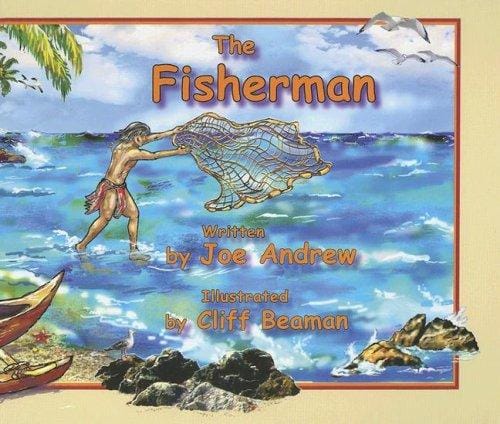The Fisherman: History, Symbolism & Modern Relevance
Explore the fisherman archetype, from prehistoric hooks and mythic tales to modern sustainable angling, and discover why this figure still inspires us today.

Introduction
The figure of the fisherman has stood at the water's edge since humanity first learned to weave nets and fashion hooks. Part provider, part storyteller, the fisherman represents our earliest pact with nature: take only what is needed and honor the sea that grants it. In every coastal town, morning begins with the slap of waves against hulls and the earthy scent of wet rope, reminding us that this ancient craft still feeds millions.
Yet The Fisherman is more than a job description; he is an archetype woven into language, literature, religion, and even business culture. Understanding his origins, tools, and enduring symbolism teaches us not only about the past but about the sustainable future we hope to build. Cast your line into the following exploration and discover why this humble figure continues to hook our imagination.
Origins of the Fisherman Archetype
Archeologists have discovered fish hooks made of bone in eastern Timor dating back 42,000 years, proof that our ancestors relied on marine protein long before the plow was invented. Early coastal communities from the Nile Delta to the Yellow Sea organized trade routes around dried and salted fish, elevating skilled anglers to positions of respect. These pioneers developed rudimentary ecological knowledge, tracking spawning cycles and tides that remain part of traditional wisdom today.
Stories followed the commerce. In Mesopotamian myth, the culture hero Oannes emerges from the Persian Gulf as a half-fish teacher who gifts agriculture and laws to humanity. Greek legends give us Glaucus, a fisherman transformed into a sea god after tasting a magical herb. In each tale, fishing carries dual meanings: survival and spiritual initiation. To cast a net is to enter a liminal space between known land and mysterious depths.
Daily Life and Skills
The daily rhythm of a traditional fisherman is governed by the moon, the weather, and a keen eye for subtle changes in water color. Before dawn, gear is sorted—nylon lines, cork floats, cedar lures, or age-old cotton seine nets still patched by hand. Knowing how to mend a net quickly can mean the difference between a profitable haul and a wasted trip, making craftsmanship as important as brute endurance.
Beyond equipment, successful anglers memorize underwater topography the way city dwellers recall subway stops. They read ripples for signs of bait fish, interpret bird dives as indicators of larger predators, and follow temperature breaks mapped on inexpensive sonar. In remote villages, cooperative fishing persists; families share boats, split fuel costs, and rotate fishing zones to prevent depletion, demonstrating that community is the fisherman’s greatest, if invisible, tool.
Symbolism in Literature and Myth
The fisherman’s toil has long served writers as a metaphor for patience, faith, and redemption. The Gospel of Matthew recounts Jesus telling Simon Peter to become a fisher of men, reframing an everyday occupation as spiritual mission. Centuries later, Ernest Hemingway distilled stoic perseverance in The Old Man and the Sea, where Santiago’s epic struggle with a marlin mirrors humanity’s eternal duel with fate. Readers instinctively grasp the stakes because the hunger for a catch is universal.
Asian cultures echo the theme. Japan’s legendary Urashima Tarō rescues a turtle while fishing and is rewarded with a glimpse of the dragon king’s undersea palace, only to return and find centuries have passed. Such cautionary fables warn of time’s fluidity and the cost of curiosity, yet they also honor the fisherman’s courage to venture where most cannot breathe. Across continents, the line cast into darkness symbolizes hope cast into uncertainty.
Modern Relevance
Despite satellites and factory trawlers, small-scale fishers still land nearly half the world’s seafood, supplying local markets with fresher, lower-carbon protein than industrial fleets can provide. Urban anglers meanwhile find solace on piers and riverbanks, turning fishing into mindful recreation that combats screen fatigue. Social media hashtags like #FishingFriday showcase beginner triumphs alongside indigenous knowledge, blending tradition with technology in unexpected ways.
The archetype also migrates into entrepreneurship. Tech founders speak of fishing where the fish are when discussing market research, while recruiters cast wider nets for talent. These linguistic borrowings prove that the core principles—observation, timing, and adaptability—remain relevant beyond the shoreline. Whenever a leader urges patience for the big catch, they invoke the fisherman’s ageless playbook.
Sustainable Fishing and Conservation
Today, responsible fishermen integrate science with ancestral intuition. They use circle hooks that minimize by-catch, observe legally mandated no-take seasons, and log data through smartphone apps that feed into global monitoring platforms like Global Fishing Watch. Consumer initiatives such as the Marine Stewardship Council label empower diners to choose fish caught with minimal habitat damage, proving that every purchase can reinforce sustainable practices developed on deck.
Conclusion
Whether encountered in myth, on a windswept jetty, or in the language of boardrooms, The Fisherman reminds us that patience, respect for cycles, and willingness to face the unknown are timeless virtues. In learning to fish wisely, we learn to live wisely, ensuring abundant seas and stories for generations.



